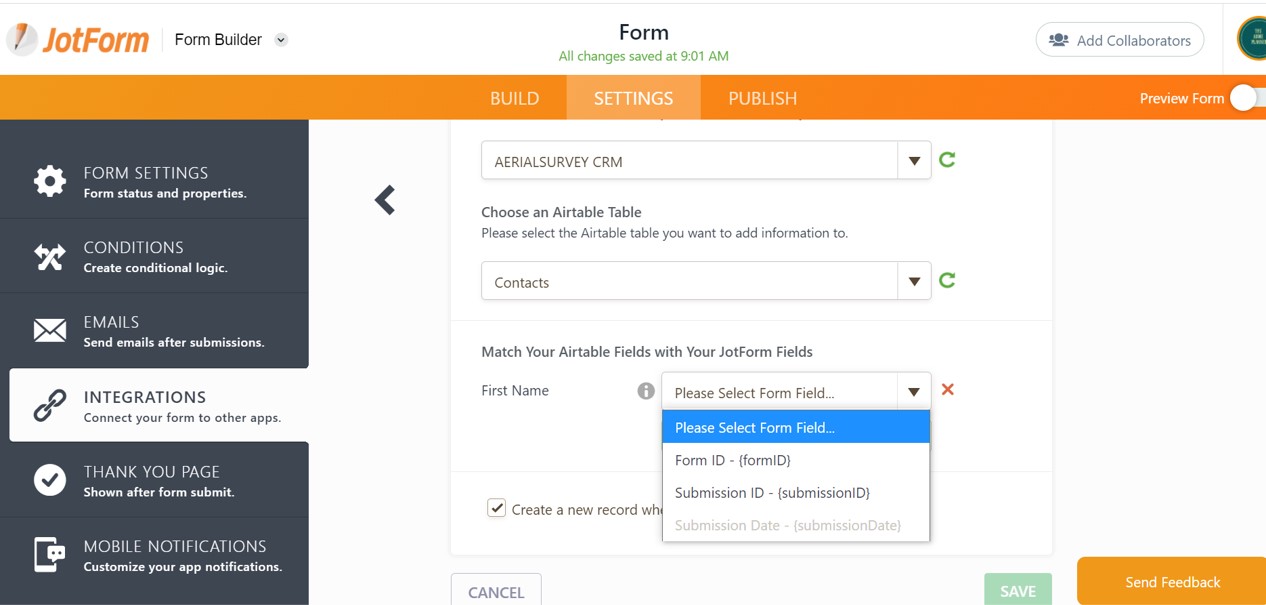
Formulas give you the opportunity to use Airtable in creative and inventive ways.Īirtable formulas are applied to an entire column, as opposed to a single cell. The formulas can involve logic, text, numbers, conditional statements, and functions. In addition to creating advanced calculations in a database or automatically managing a budget, you could use Airtable formulas to set and assign recurring events for project management. But Airtable formulas can be used for other purposes as well. When most people see or hear the word “formula,” they automatically associate it with math or numbers. But the formulas in Airtable are far more advanced, allowing you to use this functionality for a wide range of potential use cases. You can use formulas to manipulate data, calculate different metrics, or make it easier to understand the information in a database.Īirtable formulas can best be compared to formula functions on a traditional spreadsheet, like Excel or Google Sheets. What Are Airtable Formulas Anyway?įormulas are arguably Airtable’s most powerful features. This guide will explain everything you need to know about Airtable formulas. You can use it to manage workflows, track inventory, collaborate with teams, and so much more.īut to get the most out of Airtable and its functionality, you need to understand Airtable formulas and how they work. You can also customize Airtable field types if you follow the instructions here.Airtable is a versatile relationship database tool. You can find an overview of the available field types in Airtable here. However, the Enable rich text formatting setting is supported when you use the Typeform Extension in your Airtable.


When using the Long text field type in Airtable, make sure the setting for Enable rich text formatting is toggled off as it's not supported for this integration. Mapping the Single Select and Multiple Select field types in Airtable to the Yes/No question in Typeform is not supported. If you try to integrate a typeform that includes the Other field, the integration won't work. The mapping of the Other field in Multiple Choice questions is currently not supported. We recommend mapping the Multiple Select field type in Airtable to the Multiple Choice question in Typeform instead of Single Select. When mapping Multiple Choice questions to a Single Select field, make sure Multiple Selection is turned off in Question Settings (on the right-hand side of the Create panel). If your options are basil, parsley, and coriander in your typeform question, you'll need basil, parsley, and coriander in the matching Airtable field. The Payment, Matrix and Ranking question types are currently not supported by the integration.Įvery choice in your Multiple Choice question must be mapped to a corresponding field in Airtable, and the options in your typeform question must match the options in your Airtable field. Multiple Choice, Dropdown, Picture Choice Some question types are compatible with multiple field types: Typeform question type/valueĭuration, Currency, Legacy, Percent Times100 Then you can delete this test submission in Airtable, share your typeform as needed and let your data roll in, hands-free! List of Typeform questions and compatible Airtable field typesĬheck which Airtable fields are compatible with your typeform’s questions here. You’ll see your new data submission almost immediately. Now check the information has landed in your Airtable correctly. To finish, open your typeform and test it, making sure to click Submit at the end. Learn more about importing responses from a typeform to an Airtable base here.ġ0. However, you can add a Typeform Extension to your Airtable base to populate a table from existing responses you've collected. This integration also does not backfill responses you've already collected.
#AIRTABLE CHANGE PRIMARY FIELD UPDATE#
Note that this integration only creates new Airtable records, and does not update existing Airtable records.

Once you’ve made a typeform, with questions for all the information you want to collect in Airtable, you can set up the integration.

So, the Date field has a corresponding typeform Date question, and so on. For every Airtable field you want to send information to, you need a corresponding question in your typeform.įor this tutorial, we’re using an event planning Airtable, and a typeform with questions that correspond to each field. The first thing you’ll need to do is create the typeform that will feed your Airtable. Typeform offers a neat way to collect information and send it to an Airtable. A typeform with questions corresponding to your Airtable fields.An Airtable account with a base and table set up.From collecting leads for your sales CRM, to organizing an event, you can use the conversational feel of Typeform to populate your Airtable. With this integration, you can send information from a typeform to an Airtable base.


 0 kommentar(er)
0 kommentar(er)
